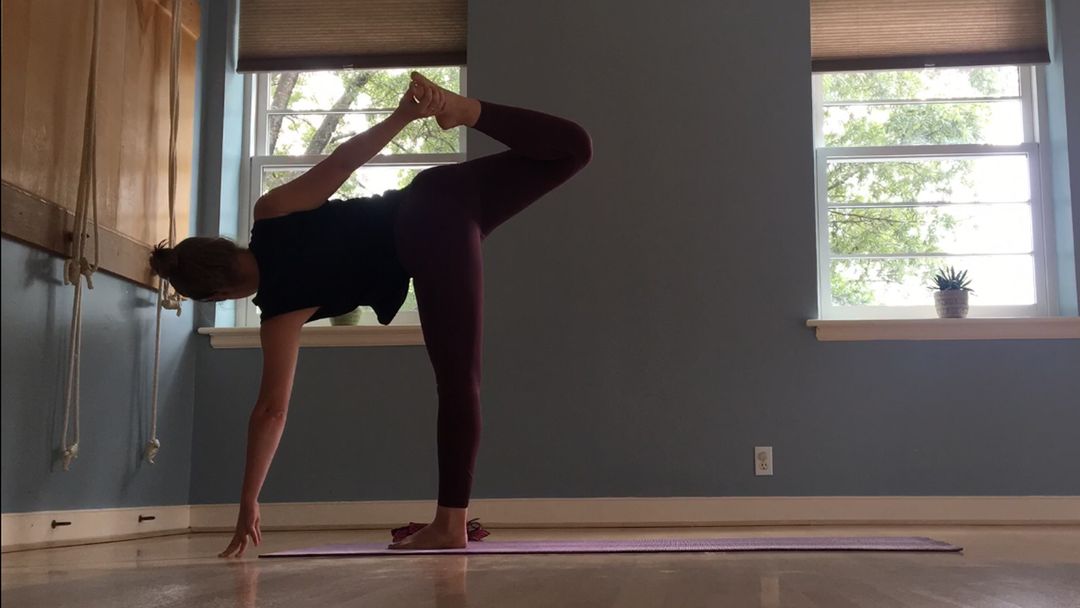Hypermobility can occur in both joints and muscles. You might be a hypermobile yogi if you are hyperextended in any of your joints, and/or if you’re just really flexible! We hear all the time to take micro bends in our knees and elbows to protect our joints, but that will only get you so far. Read on for 5 essential yoga modifications and adjustments to counteract hypermobility.
Pull your shoulder blades down towards your back pockets
Many hypermobile yogis with flexible hamstrings and backs will end up arching backs, tilting pelvis down (front points tilting down), and sticking out guts. This can put you at risk for injury. To counteract this, imagine that you have wings attached to your shoulder blades and pull your wings down along your sides. This adjustment will help you to stabilize your shoulders and engage core.
This modification is essential for any postures on your forearms or hands. Try it next time your in downward facing dog, or any other pose on your hands.

Engage quad, pull up on knee cap
In any pose with the front leg straight (like half moon), before moving into it, engage your thigh muscles and pull up on your knee cap. This motion will help to protect your knee joint as well as stabilize yourself so you will be less likely to overstretch the hamstring.

Claw the mat
Notice if your knuckles are lifting up when you hands are on the mat. If so, think about clawing the mat, and grounding down through the whole palm. This engagement (also known as mula bandha, or hand lock) helps to support the wrists and prevent wrist pain. Having a strong foundation at your hands will change your entire practice. Practice mula bandha in downdog, plank, and any arm balances.

Squeeze those cheeks! (in backbends)
To squeeze or not to squeeze? In yoga classes I’ve been in, I’ve been taught to both squeeze and not squeeze my cheeks in backbends like bridge and wheel. For hypermobile yogis, squeezing your cheeks (engaging the glutes) in backbends is especially important. This engagement will stabilize the pelvic region and protect your lower back. In addition, it will cause a slight anterior tilt in the pelvis, which will actually create more space in the mid and upper back for you to bend and not break.

Use blocks!
Grab two blocks, even when you don’t think you need them. We all know you can touch the floor, but can you actively hold yourself in the pose? Especially for hypermobile yogis, it can be easier to sink into a deep stretch than to actively hold yourself in the pose. Use blocks to prevent yourself from stretching and sinking too deep into the pose and to pull yourself out of your deepest stretch to actively engage your muscles in the pose.
Good examples to try this modification in are half-splits, lizard lunge, and triangle pose.

Yoga is a practice, and can be a lifelong practice if you are careful to take care of your body. Remember these 5 essential modifications to protect your body, and make sure you bend rather than break!
Image Credit: KC Whitsett



